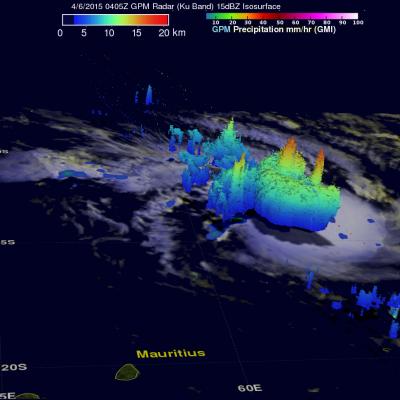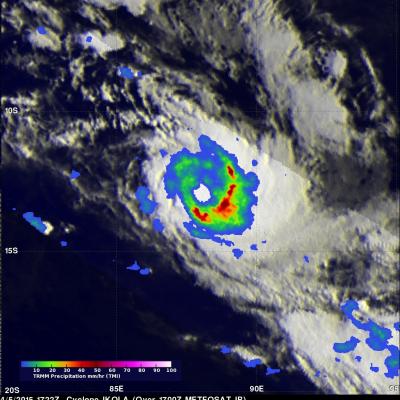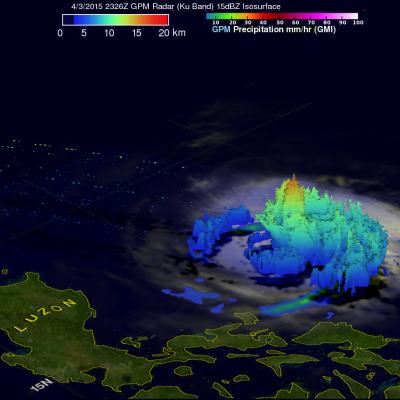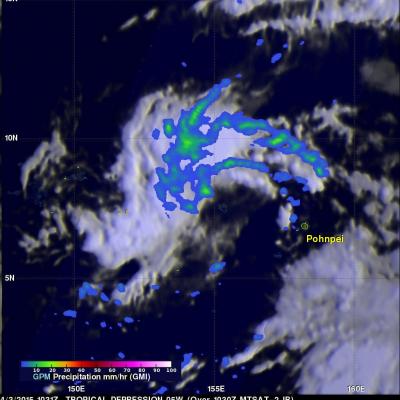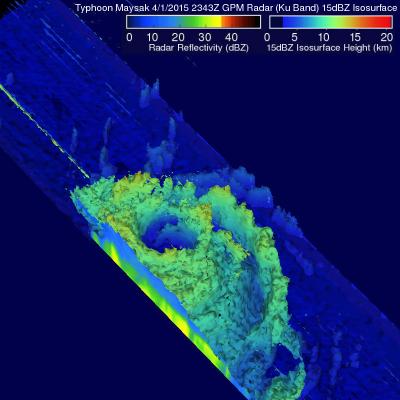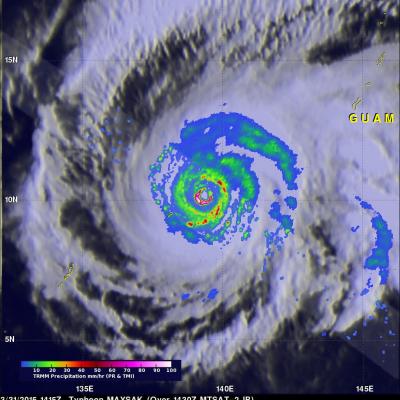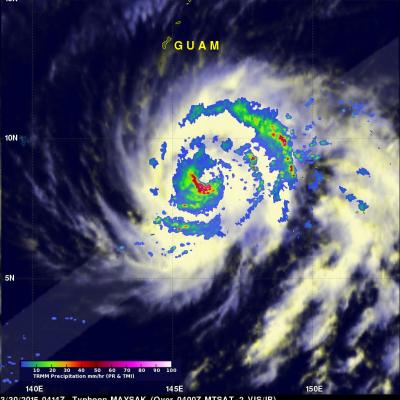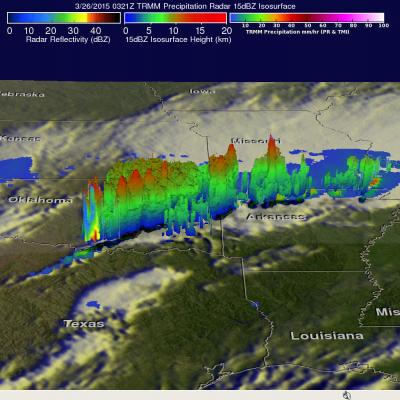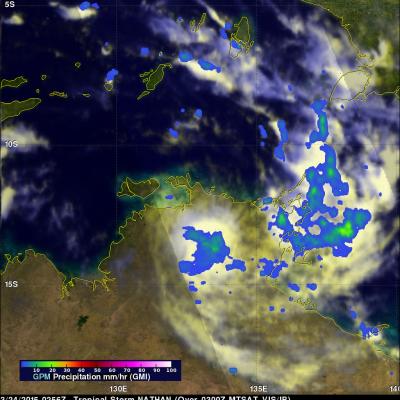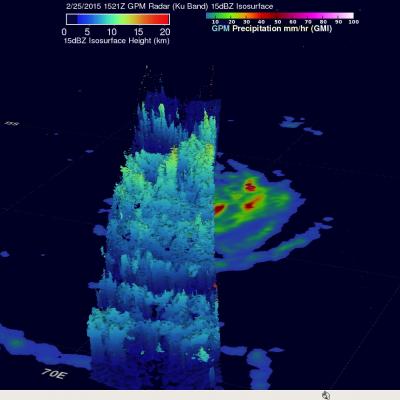GPM Measures Rain in Cyclone Joalane
Two powerful tropical cyclones called Ikola and Joalane are now moving through the South Indian Ocean. The GPM core observatory satellite flew over intensifying cyclone Joalane in the South Indian Ocean on April 6, 2015 at 0406 UTC. GPM's Microwave Imager(GMI) found that intense convective thunderstorms within Joalane were dropping rain at a rate of over 63 mm (2.5 inches) per hour. Cyclone Joalane was located northeast of Mauritius at the time of this GPM pass. A 3-D view of Joalane's vertical precipitation structure was constructed from GPM's Radar (Ku Band) data. This cross section shows


